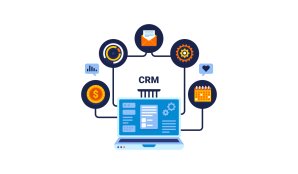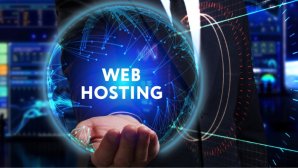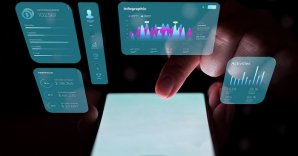The Internet of Things (IoT) has evolved from a buzzword to a cornerstone of modern technological advancement. By connecting devices, systems, and data, IoT is driving breakthroughs in automation, efficiency, and user-centric design across industries. This article explores how IoT is redefining tech innovation, its symbiotic relationship with emerging technologies, and the challenges and opportunities it presents.
1. IoT as a Catalyst for Cross-Industry Innovation
IoT’s ability to interconnect devices and analyze real-time data is revolutionizing sectors from healthcare to agriculture, creating smarter, data-driven ecosystems.
A. Smart Cities and Urban Development
IoT enables cities to optimize resources, reduce waste, and improve quality of life through intelligent systems:
-
Energy Management: Smart grids balance supply and demand using IoT sensors, integrating renewables like solar and wind.
-
Example: Amsterdam’s City-zen project reduced energy consumption by 30% via IoT-enabled grids.
-
-
Traffic Optimization: Real-time data from cameras and sensors eases congestion.
-
Impact: Los Angeles’ IoT traffic system cut commute times by 12%.
-
-
Waste Management: Smart bins like Enevo optimize collection routes, lowering operational costs by 40%.
B. Healthcare Transformation
IoT is enabling proactive care and remote monitoring:
-
Wearable Devices: Fitbit and Apple Watch track vital signs, alerting users to anomalies.
-
Telemedicine: IoT-powered kits (e.g., TytoCare) let doctors diagnose patients remotely.
-
Drug Adherence: Smart pill dispensers like Hero notify patients to take medications.
-
Stat: Remote monitoring reduces hospital readmissions by 50% (NIH).
-
C. Precision Agriculture
Farmers leverage IoT to boost yields sustainably:
-
Soil Sensors: Measure moisture and nutrient levels, automating irrigation.
-
Drone Surveillance: Monitor crop health and predict pest outbreaks.
-
Case Study: John Deere’s IoT-enabled tractors increased soybean yields by 15%.
-
2. Synergy with Emerging Technologies
IoT’s potential is amplified when integrated with AI, 5G, and blockchain, creating a cohesive tech ecosystem.
A. AI and Machine Learning
-
Predictive Analytics: AI processes IoT data to forecast equipment failures (e.g., GE’s Predix Platform).
-
Autonomous Systems: Self-driving cars use IoT sensors and AI to navigate safely.
B. 5G Connectivity
-
Ultra-Low Latency: Enables real-time applications like remote surgery and autonomous drones.
-
Massive Device Density: Supports 1M devices per square kilometer, critical for smart factories.
C. Blockchain Integration
-
Secure Data Sharing: Blockchain ensures tamper-proof records for IoT supply chains.
-
Example: Walmart uses blockchain to trace food origins in seconds during recalls.
-
3. Challenges in IoT-Driven Innovation
While IoT promises transformative benefits, scaling its adoption requires addressing critical hurdles.
A. Security Vulnerabilities
-
Device Exploits: Unsecured IoT devices are prime targets for hackers.
-
Stat: 57% of IoT devices are vulnerable to cyberattacks (Palo Alto Networks).
-
-
Data Privacy: GDPR and HIPAA compliance demands stringent data governance.
B. Interoperability Issues
-
Fragmented Standards: Competing protocols (e.g., Zigbee vs. Z-Wave) hinder integration.
-
Legacy Systems: Retrofitting old infrastructure with IoT tech is costly and complex.
C. Sustainability Concerns
-
Energy Consumption: Billions of IoT devices strain power resources.
-
Solution: Low-power protocols like LoRaWAN extend battery life.
-
-
E-Waste: Rapid device turnover contributes to environmental harm.
4. Future Trends in IoT Innovation
IoT’s evolution will be shaped by advancements in AI, edge computing, and ethical frameworks.
A. AIoT (AI + IoT)
-
Autonomous Factories: AI-driven robots and IoT sensors will enable lights-out manufacturing.
-
Smart Retail: Cashier-less stores like Amazon Go use AIoT for seamless checkout experiences.
B. Edge Computing Expansion
-
Local Data Processing: Reduces latency for critical applications (e.g., autonomous vehicles).
-
Prediction: 75% of enterprise data will be processed at the edge by 2025 (Gartner).
-
C. Ethical and Inclusive Design
-
Bias Mitigation: Ensuring IoT algorithms don’t perpetuate socioeconomic disparities.
-
Rural Connectivity: Projects like Starlink aim to bring IoT benefits to underserved regions.
Conclusion
IoT is not merely a technological trend but a foundational shift in how industries operate and innovate. By fostering cross-sector collaboration, enhancing efficiency, and integrating with AI and 5G, IoT is laying the groundwork for a hyper-connected future. However, addressing security, interoperability, and sustainability challenges is crucial to unlocking its full potential. As IoT continues to evolve, it will remain at the heart of tech innovation, driving progress that is both transformative and inclusive.




























They made sure I had a support system even after leaving the facility. Los Angeles Rehab